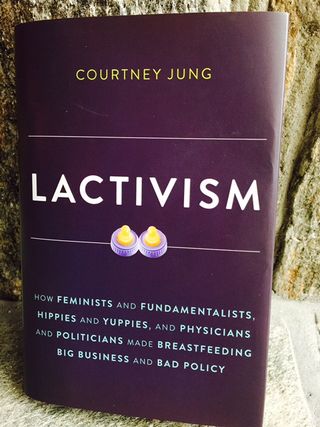Diet
The Care and Feeding of Myths: Breastfeeding and Weight
Separating out science from fiction in breastfeeding research on obesity
Posted February 15, 2016

The origin of our Milky Way began with a reluctant breastfeeding. Or so the Greco-Roman myth goes, as described in an ancient Byzantine text Geoponica: the god Jupiter had an illicit affair with a mortal and wished his offspring Hercules to obtain immortal powers. To bring this about, Jupiter gave the infant to nurse at the breast of his sleeping goddess wife Juno, but when Juno awakened, she became furious and violently pulled her breast away, only to have her milk spill out across the sky and form the Milky Way. This myth is itself immortalized in two paintings, the 1575 painting by Tintoretto that hangs in the National Gallery in London, and the Rubens painting (1636-38) hanging in the Prado Museum in Madrid. Of course, for a more scientific version of the origin of the Milky Way, see Lisa Randall’s 2015 book Dark Matter and the Dinosaurs.

Some of the myths surrounding breastfeeding, though, may be just as fanciful as our Milky Way saga. In her new book Lactivism, Courtney Jung writes of the “moral righteousness” that has enveloped breastfeeding, “Breastfeeding is no longer just a way to feed a baby; it is a moral marker that distinguishes us from them—good parents from bad.” It has become a “talisman to ward off evil.” It is in this present climate that breastfeeding and the commodity of breast milk specifically have been endowed with “super,” almost immortal powers.
Breastfeeding, of course, has always been around—it is one of the defining characteristics of being a mammal, i.e., nursing young at the breast. There are even several Biblical breastfeeding references, such as in Exodus when Pharaoh’s daughter employs a wet nurse to feed the infant Moses whom she has rescued. Over the years, interest in breastfeeding has waxed and waned among women. According to the most recent CDC statistics, seventy-nine percent of women in the U.S. start breastfeeding, and forty-nine percent are still breastfeeding at 6 months. Many factors influence a woman’s decision to breastfeed, as well as to her decision to stop, including the health of either mother or infant; family support and expectations; and even issues of convenience related to family or job. (Woo and Martin, Current Obesity Reports, 2015) Sometimes, though, breastfeeding is contraindicated, (e.g. when a mother takes medication or has an infection such as HIV that would dangerously transfer to the infant or an infant is born with deformities that would obviate breastfeeding.) But when a mother does not produce enough milk, she is labeled pejoratively, says Jung, a “lactation failure.”

What about harms in breastfeeding? Lehmann et al (Critical Reviews in Toxicology, 2014) reviewed potential health risks to breastfed infants from environmental chemicals (e.g. heavy metals, phthalates, bisphenols, perchlorates, etc.), including synergistic mixtures of these that can accumulate in breast tissue of a mother throughout her life. Neither the “critical window” of exposure nor the dose-response information for these pollutants is known, and animal studies are limited because these chemicals can have different half-lives in animals and differences in the duration of exposure. Of course, Lehmann et al acknowledge that bottle-fed infants can also be exposed through the environment, and given these caveats, they still conclude that the natural process of breastfeeding is best.
What are some of the advantages, particularly of exclusive breastfeeding (i.e. no other food) for the first six months as is recommended by the American Academy of Pediatrics? (Kramer and Kakuma, Cochrane Database of Systemic Reviews, 2012) (But note, even this number is somewhat arbitrary as I did not find any studies in which mothers stopped breastfeeding at 4 and ½ or 5 months.) Human breast milk has been called “the optimal first food.” (Woo and Martin, 2015.) Breastfeeding establishes a strong intimate bond between mother and infant (Jelliffe and Jelliffe, New England Journal of Medicine, 1977) and conveys immunity to the infant (e.g. preventing less morbidity from infectious disease.) (Kramer and Kakuma, 2012) Exclusive breastfeeding, as well, can also act as a contraceptive in delaying the onset of ovulation (“prolonged lactation amenorrhea,” Jelliffe and Jelliffe, 1977; Kramer and Kakuma, 2012) and hence enable increased spacing between children. Furthermore, since it burns 500 more calories a day, it can be beneficial in helping women lose their pregnancy weight gain.(Stuebe, Seminars in Perinatology, 2015) Breastfeeding, as well, is also considerably safer than using formula when water sanitation is poor in many countries.
The science, though, is considerably weaker, at least at this point, in regard to linking breastfeeding with long-term control of overweight or obesity during childhood or into adulthood. The first reports of a link between weight in adolescence and breastfeeding occurred in the early 1980s (see the discussion by Bartok and Ventura, International Journal of Pediatric Obesity, 2009). Many studies have followed, but research comparisons across these studies are often problematic when there are different populations, for example, with different inclusion and exclusion criteria, and even different definitions of “exclusive breastfeeding” and “nonexclusive breastfeeding.” (Marseglia et al, Women and Birth, 2015) Furthermore, crucially, Cope and Allison (Obesity Reviews, 2008) have found that some breastfeeding researchers use the “inappropriate” language of cause and effect and fail to differentiate possible associations from actual causation. In their comprehensive and critical review of the 2007 World Health Organization report on breastfeeding, Cope and Allison also found evidence that researchers failed to take into full consideration of so-called publication bias, i.e., “when the probability of a study being published depends on the outcome of the study” and most often,“involves statistically significant studies having a higher likelihood of being published than do studies with results that are not statistically significant.” When these events happen, a compromise to research is inevitable.

Cope and Allison (2008) acknowledge that conducting research on breastfeeding is difficult. For example, since there are indeed recognized benefits to breastfeeding, it is unrealistic and unethical to conduct randomized controlled studies that would entail assigning mothers to a non-breastfeeding group. Further, there are potential confounding variables (e.g. mother’s own weight, education, and race) that are challenging, if not almost impossible, to separate out entirely: those who breastfeed are more likely in recent years to come from a higher socioeconomic class, have more social support, and to be more health-conscious (e.g. exercise and diet more regularly and be less likely to smoke.) (Bartok and Ventura, 2009; Stuebe, Seminars in Perinatology, 2015.) For those statistically-minded, see the 2015 paper by Allison and colleagues (Pavela et al, European Journal of Clinical Investigation) on so-called “packet randomized experiments--PREs”—an intermediate design between randomized controlled trials and observational studies that can be used to strengthen potential causal relationships in research design, including research on breastfeeding. From their review, though, Cope and Allison (2008) conclude that the benefits of breastfeeding “outweigh the harms for most people “ but they found it “unwarranted at this time” to conclude that breastfeeding “causally reduces the risk of overweight or obesity.” More recently, Casazza et al (New England Journal of Medicine, 2013) underscore that it is one of the many myths about obesity that breastfeeding is protective against obesity. In fact, the one major randomized study (called “cluster randomization” since randomization was done by site) from Belarus, (the PROBIT study—Promotion of Breastfeeding Intervention Trial) involving over 17,000 mothers (31 different hospital sites and their clinics) followed over 11.5 years found there was not a clear and consistent relationship between breastfeeding and weight in infants and children over time, but cautioned that the Belarus population results might not generalize to other populations. (Martin et al, JAMA, 2013)

Why could breastfeeding, though, theoretically lead to reduced weight in an offspring? One theory is that since intake is harder to monitor in breastfed babies, a mother has to rely on cues such as an infant's turning its head away rather than an external cue such as an empty baby bottle. (Woo and Martin, 2015) As a result, infants may learn to self-regulate their amount of food intake. Further, breast milk contains many hormones from the mother, such as insulin, insulin-like growth factor, leptin, adiponectin, etc that may be influencing “neuroendocrine circuits” involved in appetite control in the infant (Marseglia et al, Women and Birth, 2015) and “of critical importance in the metabolic development of the infant.” (Çatli et al, Journal of Clinical Research in Pediatric Endocrinology, 2014) Breastfed infants, as well, have different levels of certain bacteria (e.g. Bifidobacteria) in their gastrointestinal tracts that ultimately may have effects on long-term weight.

Over the years, there have been considerable, though unsuccessful, attempts by formula manufacturers to “humanize” their product. (Jelliffe and Jelliffe,1977). Infant formulas, particularly in this country, are (and have been for years) highly regulated. Such was not the case in China when the toxic levels of the chemical melamine tainted formula there. For a history of infant formulas, see the most recent article by Wargo (Journal of the Association of Official Analytical Chemists International, 2016) as well as Jung’s discussion of the Nestlé Company’s tactics to encourage women to use formula. Despite the fact that most formula today derives from cow’s milk, “formula’s macro-and micro-nutrient composition still contains key differences from human breast milk.” (Bartok and Ventura, 2009) Further, mother’s milk varies with her diet so that breastfed infants may be exposed to and develop a taste for novel flavors whereas the taste of a formula does not vary. (Woo and Martin, 2015)
Bottom line: Breastfeeding is clearly a natural and beneficial process. Woo and Martin (2015), though, summarize its connection to obesity, “It is not sufficient to continue to ask whether obesity is associated with breastfeeding. Future research should refine the question to ‘under what circumstances does feeding human milk affect growth patterns, or body composition, or metabolic processes in the short, medium, and longer term.’”




